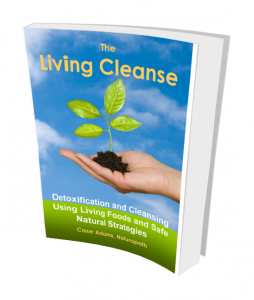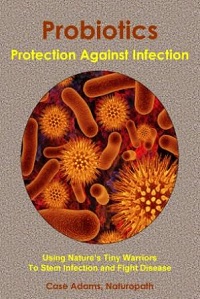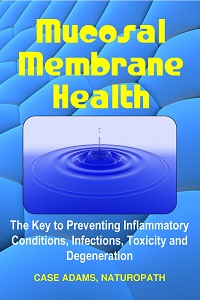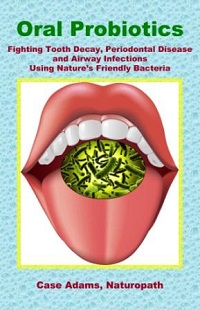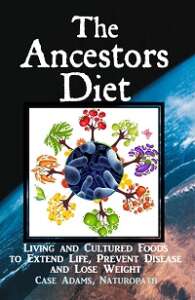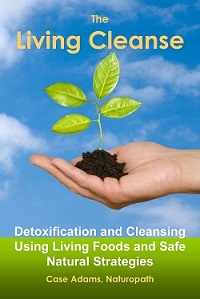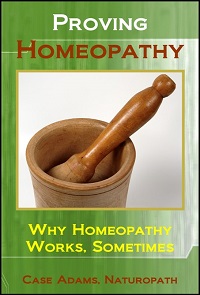RoundUp Glyphosate Found in Popular Food Brands

Spraying RoundUp on grains leads to glyphosate exposure in popular food brands.
Glyphosate, the key ingredient in RoundUp® pesticide, has now been found in significant amounts in popular food brands according to two different toxicology studies.
We’re talking about popular foods from some of the largest food brands, including Quaker, Doritos, Kelloggs and Back to Nature. Yes, some of these are brands that position their branded foods as natural, yet they have been found to contain hundreds of PPBs (parts per billion). This is a significant amount according to food scientists, as we’ll discuss.
In this article
How much glyphosate do Americans consume?
A 2012 assessment by the U.S. Environmental Protection Agency found that American adults could be consuming an average of more than 5 milligrams of glyphosate each day.
This is five times more than California’s proposed limit for glyphosate consumption of 1.1 milligrams of glyphosate each day. This is for an adult weighting 154 pounds.
Significant glyphosate in popular foods
In a 2018 study from the Environmental Working Group on glyphosate, 45 conventional breakfast foods were tested and 16 organic foods were tested. The foods were tested for levels of the chemical glyphosate. Glyphosate is considered the active ingredient in RoundUp herbicide – but there are many other toxic chemicals in RoundUp, and together this makes RoundUp about 125 more carcinogenic than glyphosate alone.
Out of the 45 conventional brands tested, 43 of them contained detectable levels of glyphosate. More importantly, 31 of these foods contained over 160 parts per billion (ppb) of glyphosate. This 160 ppb is considered a dose that would achieve a daily dose that could potentially cause cancer. This was even higher than levels established by California’s Proposition 65 that increases the risk of cancer in children.
The researchers found that a number of popular conventional brands contained these significant levels of glyphosate. Here are the foods with the highest levels:
- Quaker Old Fashioned Oats (1300 ppb)
- Quaker Dinosaur Eggs, Brown Sugar, Instant Oatmeal (780 ppb)
- Giant Instant Oatmeal, Original Flavor (760 ppb)
- Back to Nature Classic Granola, (high test level of 620 ppb)
- Quaker Steel Cut Oats (530 ppb)
- Market Pantry Instant Oatmeal, Strawberries & Cream (520 ppb)
- Cheerios Toasted Whole Grain Oat Cereal (490 ppb)
- Great Value Original Instant Oatmeal (450 ppb)
- Quaker Simply Granola Oats, Honey, Raisins & Almonds (430 ppb)
- Lucky Charms (400 ppb)
- Barbara’s Multigrain Spoonfuls, Original, Cereal (340 ppb)
- Back to Nature Banana Walnut Granola Clusters (340 ppb)
- Nature Valley Crunchy Granola Bars, Oats ‘n Honey (340 ppb)
- Kellogg’s Cracklin’ Oat Bran oat cereal (250 ppb)
- Nature Valley Granola Protein Oats ‘n Honey (220 ppb)
- Umpqua Oats, Maple Pecan (220 ppb)
- Quaker Chewy Chocolate Chip granola bar (160 ppb)
These of course are very popular breakfast foods by some of the biggest food companies in the world. And because they contain so much glyphosate, surely they will also contain other chemicals contained in RoundUp.
Why do they contain so much? Because RoundUp is being sprayed on commercial crops ubiquitously. It is also often sprayed onto grain crops just before they are harvested. This makes the grain – oats, barley, wheat and corn – super-saturated with RoundUp chemicals.
Not the first glyphosate study
This is not the first study that has found “alarming” levels of glyphosate contamination in popular food brands. A 2016 glyphosate study headed up by Food Democracy Now! and The Detox Project tested 29 popular foods. The study found significant glyphosate levels in a number of poplar brands. Here are the products that had glyphosate levels above the 160 ppb zone:
- Cheerios (1,125 ppb)
- Stacy’s Pita Chips (812 ppb)
- Honey Nut Cheerios (670 ppb)
- Doritos Cool Ranch (481 ppb)
- Lay’s kettle Cooked Original (452 ppb)
- Lucy’s Oatmeal Cookies Gluten Free (452 ppb)
- Back to Nature Crispy Cheddar Crackers (327 ppb)
- Oreos cookies (289 ppb)
- Fritos Original Whole Grain (174 ppb)
Note above that “gluten free” does not escape exposure to glyphosate. Non-gluten foods include oats, barley and corn (corn contains corn barley but it isn’t the same gluten that bothers celiacs). These grains all contain significant amounts of glyphosate depending upon where and how they were grown.
How much glyphosate in organic foods?
This is an important question because organic grain crops do get sprayed with chemical herbicides such as RoundUp. As a result, most of the organic foods tested in the above two studies showed very low or non-detectable glyphosate levels. Here are some organic brands tested in the EWG study:
- Whole Foods Organic Old Fashioned Rolled Oats (None detected)
- Cascadian Farm Organic Harvest Berry granola bar (None detected)
- Kashi Heart to Heart Organic Honey Toasted cereal (None detected)
- Nature’s Path Organic Honey Almond granola (None detected)
- Bob’s Red Mill organic old fashioned rolled oats (20 ppg highest level of 3 tests)
- Nature’s Path Organic Old Fashioned Organic Oats (30 ppg)
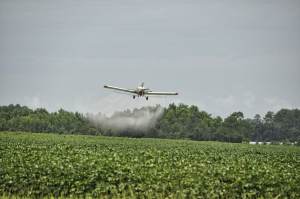
Airplane spraying herbicides such as RoundUp can cross-contaminate organic crops.
We can see clearly that organic foods do not contain much if any glyphosate. For those that have small amounts, this is likely because of what is called “cross-contamination.” This can occur when a neighboring farmer’s spraying drifts over into the organic crop land. It can also occur when farmers spray their crops using airplane dusters.
The nightmare scenario is also occurring according to other research. That is, that glyphosate has been found in a number of rain water samples by scientists. This means that the overloading of our environment with these chemicals is starting to rain down upon us.
This of course is scary because while eating organic typically provides significant protection against glyphosate exposure, future exposure will in large part depend upon how well all farmers try to control their use of RoundUp and other toxic herbicides and pesticides.
Dangers of glyphosate
Glyphosate has been linked to cancer by state of California scientists. It has also been called a probable cancer-causing agent by scientists at the World Health Organization. Other research has found that glyphosate harms probiotics in our intestines. It is thus one of the agents considered to be a contributing factor for gluten sensitivity.
Other findings have linked glyphosate exposure and premature births. This is especially true for pregnant mothers with significant glyphosate exposure.
Scientific research has also linked herbicides and Parkinson’s disease.
Support organic growers by buying organic grains and reduce your glyphosate toxin levels.

